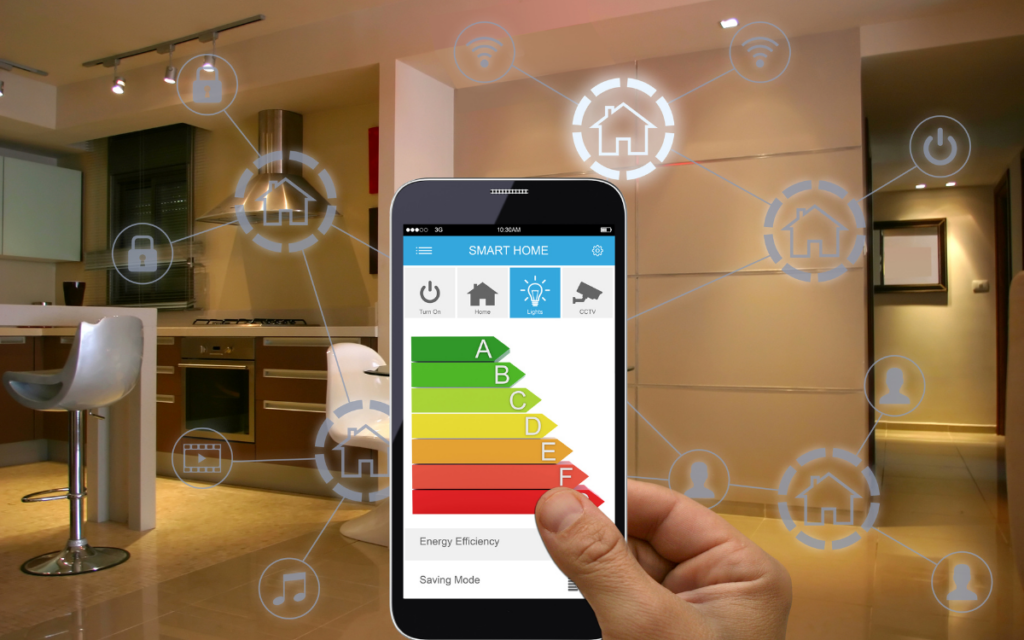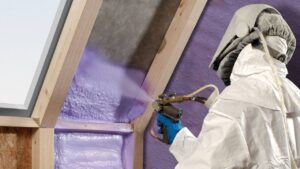How to Create an Energy Efficient Home: Key Strategies for Sustainability
Our team of specialists can give you a wide range of solutions to combat the rising fuel costs and to help reduce your carbon footprint. We are environmentally aware, and we pride ourselves on being up-to-date with the latest green solutions. It’s a modern approach to an age-old problem, but the bottom line is keeping your home warm and your family comfortable.
Creating an energy-efficient home has become a priority for many homeowners, reflecting a collective movement towards sustainability and cost reduction. Energy-efficient homes not only contribute to a lower carbon footprint but also present significant savings on utility bills. In Ireland, where the average household energy consumption remains a concern, taking steps towards a more efficient home is both financially and environmentally beneficial.
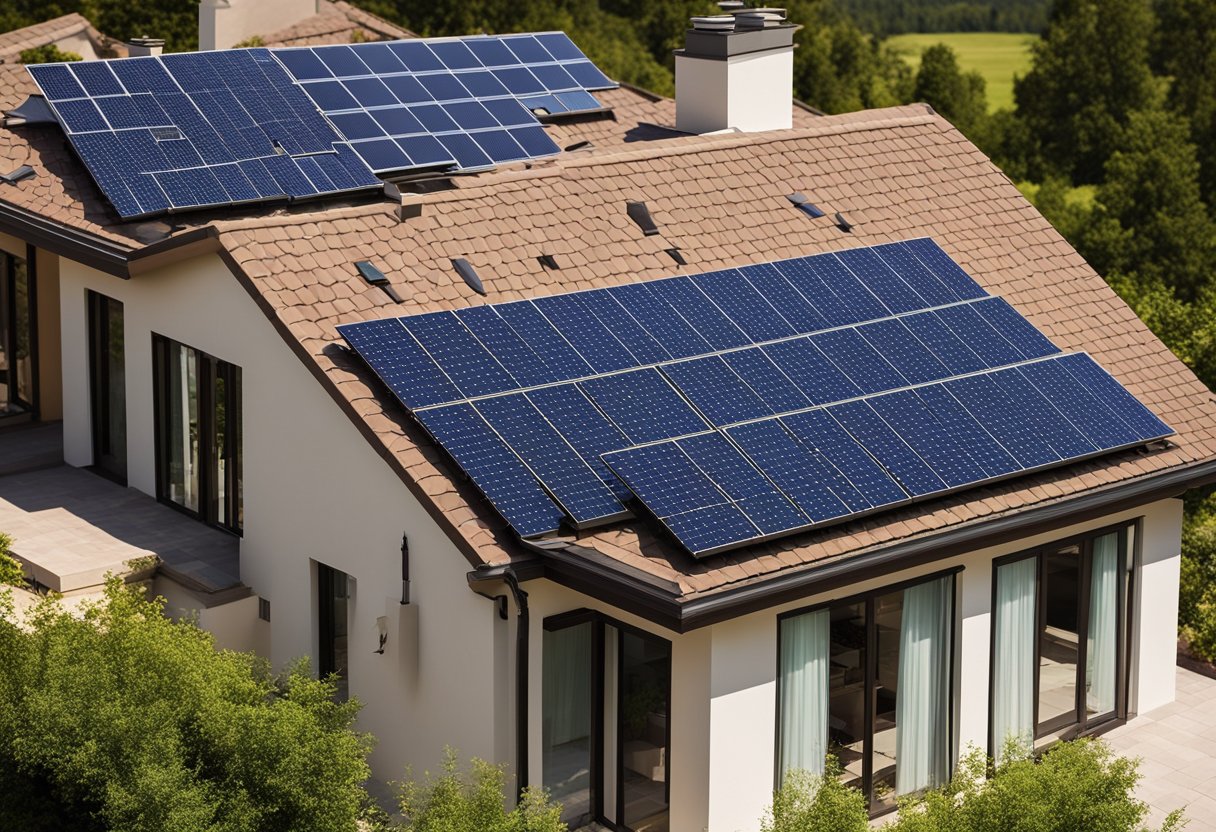
Home energy efficiency improvements range from simple behavioural adjustments to substantial home renovations. Assessing energy usage through an energy audit is a recommended starting point. It enables homeowners to identify areas where energy is wasted and to prioritise the most effective measures for conservation. Addressing these areas can lead to a more comfortable living environment, as well as long-term financial savings.
Options for making a home more energy-efficient are numerous. Upgrading to high-efficiency appliances, enhancing insulation, and utilising smart home technologies can markedly diminish energy expenditure. With the rise in energy costs and an increased awareness of environmental issues, the relevance of energy-efficient home design continues to grow, prompting homeowners to seek practical ways to adapt their living spaces accordingly.
Understanding Energy Efficiency
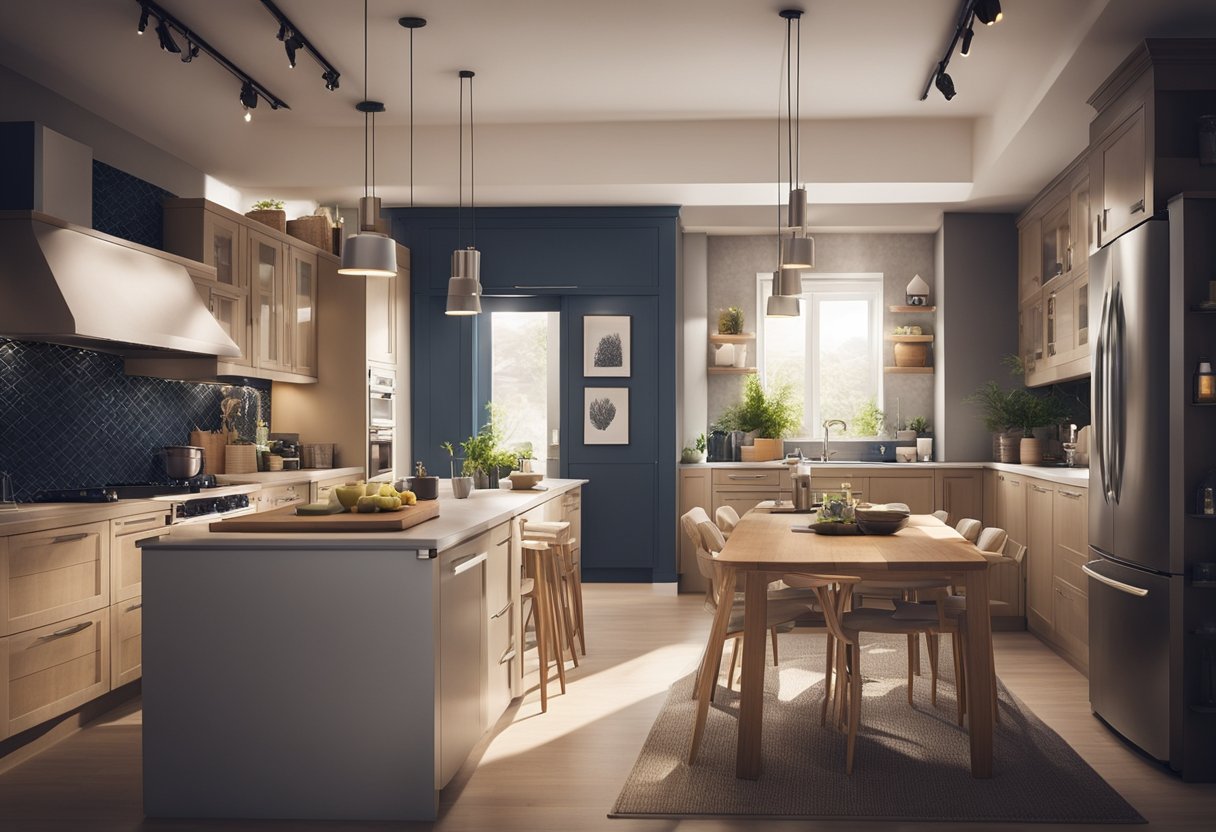
Energy efficiency in homes involves utilising technology and practices that reduce energy consumption without compromising comfort and functionality. This concept is crucial for achieving sustainability, saving money, and mitigating environmental impact.
Principles of Energy-Efficient Design
The design of energy-efficient homes revolves around several fundamental principles, aimed at minimising energy use and maximising comfort. These principles include but are not limited to:
- Insulation: Effective insulation in walls, roofs, and floors helps maintain a stable indoor temperature, reducing the need for heating and cooling.
- Energy-efficient windows: Double or triple-glazed windows can significantly reduce heat loss and gain, thereby reducing energy demands.
- Solar orientation: Properly aligning a building to take advantage of natural heat and light can decrease the need for artificial heating and lighting.
- Sealing and ventilation: Preventing unwanted drafts and providing adequate ventilation ensures that homes do not waste energy through leaks and maintain high air quality.
- Energy-efficient appliances and lighting: Using appliances and lights that consume less energy for equivalent performance can lead to substantial savings.
Benefits of Energy Efficiency
Energy-efficient homes provide several tangible benefits that go beyond the immediate environment:
- Cost Savings: Reduced energy consumption directly correlates with lower utility bills.
- Environmental Impact: Lowering energy needs translates to fewer greenhouse gas emissions, helping to reduce a building’s carbon footprint.
- Sustainability: Energy efficiency contributes to the longevity and sustainability of energy resources for future generations.
Incorporating these aspects can lead to significant savings and a lesser environmental footprint, aligning personal and ecological benefits.
Building and Insulating for Efficiency
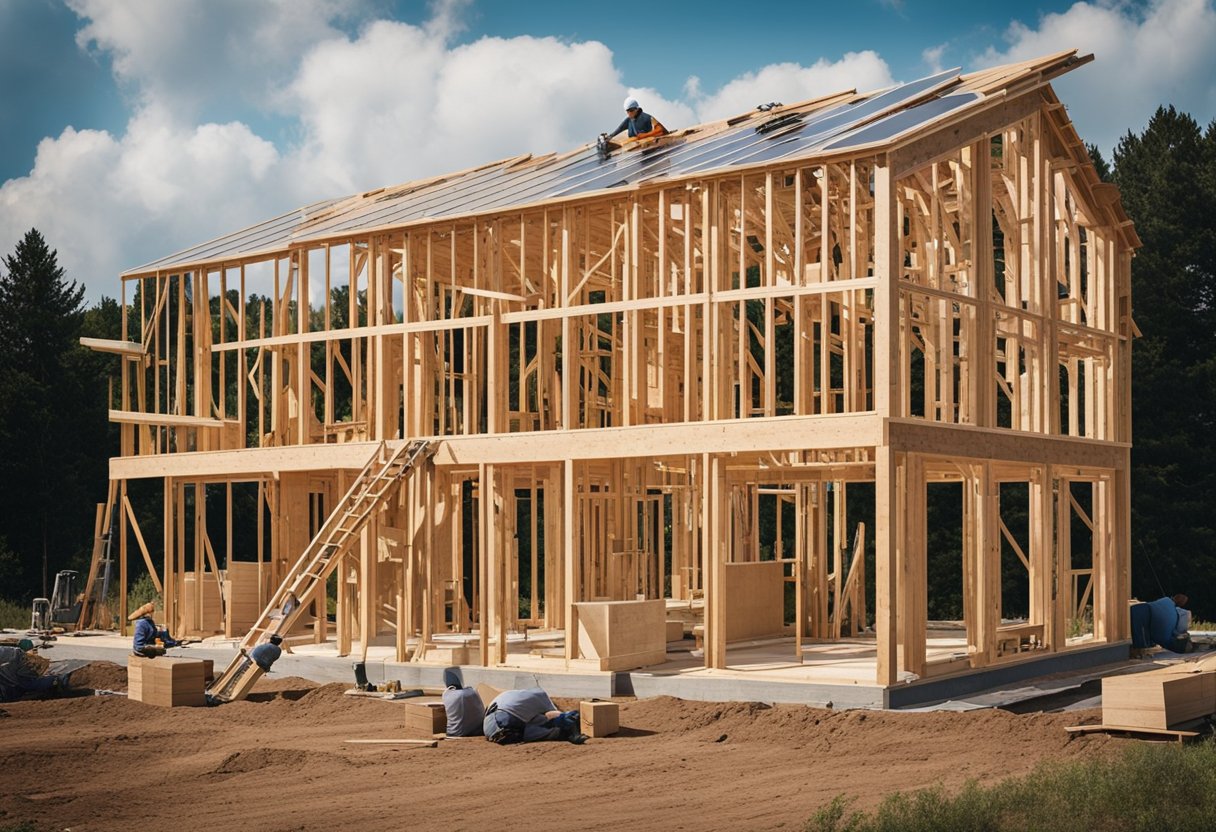
Creating an energy-efficient home requires careful consideration of both the materials used for insulation and the construction techniques applied. These aspects work together to minimise heat loss, enhance thermal efficiency, and reduce energy consumption.
Insulation Materials
The choice of insulation materials is critical for achieving energy efficiency. Homeowners should consider the R-value of materials, which indicates the resistance to heat flow – higher values represent better insulative properties.
- Rock Wool: A high-density option offering good thermal resistance and soundproofing.
- Fibreglass: Commonly used due to its low cost and effective thermal insulation.
- Polyurethane Foam: Offers excellent draught-proofing alongside high thermal resistance.
Each material needs to consider sustainability. Options like sheep’s wool and recycled denim provide greener alternatives.
Construction Techniques
Construction techniques greatly influence a building’s energy efficiency. The target is to create a well-sealed envelope that prevents energy leakage.
- Weather Stripping and Caulking: Essential for sealing gaps around doors and windows to prevent draughts.
- Thermal Bridging Prevention: Employing thermal break materials to reduce heat transfer through structural elements.
The building sector is increasingly using sustainable materials such as straw bales and bamboo, which not only offer thermal efficiency but also reduce the environmental impact of construction. Moreover, proper orientation of the home to maximise sunlight exposure can contribute to natural heating, reducing reliance on artificial systems.
Energy-Efficient Windows and Doors
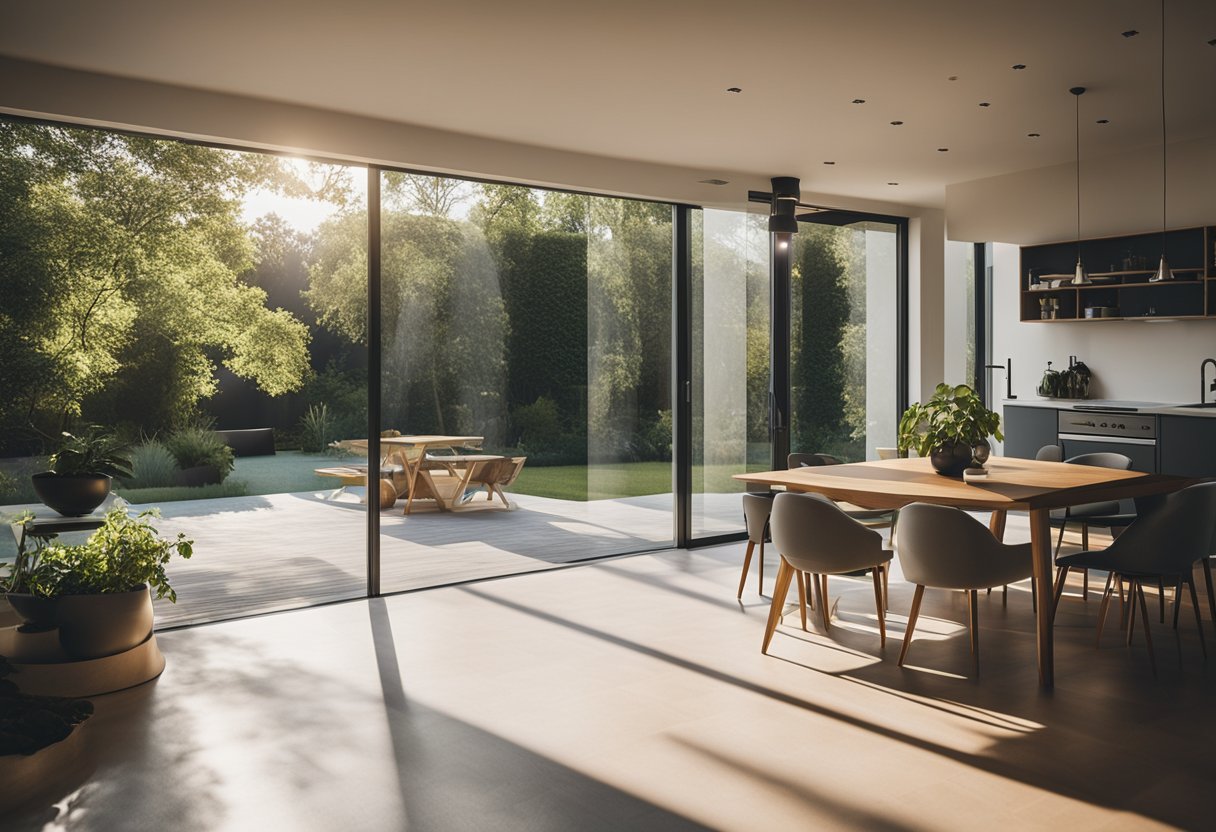
Energy-efficient windows and doors are pivotal for minimising heat loss in homes. They not only keep a home warm during the winter months but also contribute to lower energy bills and a reduced carbon footprint.
Double Glazing
Double glazing involves two layers of glass with a space between them, creating an insulating barrier that retains heat. This configuration can significantly improve a home’s thermal efficiency as it reduces the heat transfer through the window.
Materials used for the frames include:
- Vinyl Frames: A popular choice for their good thermal insulation and minimal maintenance.
- Aluminium Frames: Less insulative than vinyl, often with a thermal break to mitigate heat loss.
Proper Sealing
Effective sealing around windows and doors is essential to prevent draughts and ensure optimal insulation. Gaps in the window and door frames can be addressed using quality caulk to seal the opening effectively. Proper installation and regular maintenance of seals can greatly enhance the energy efficiency of these fittings.
Optimising Home Systems
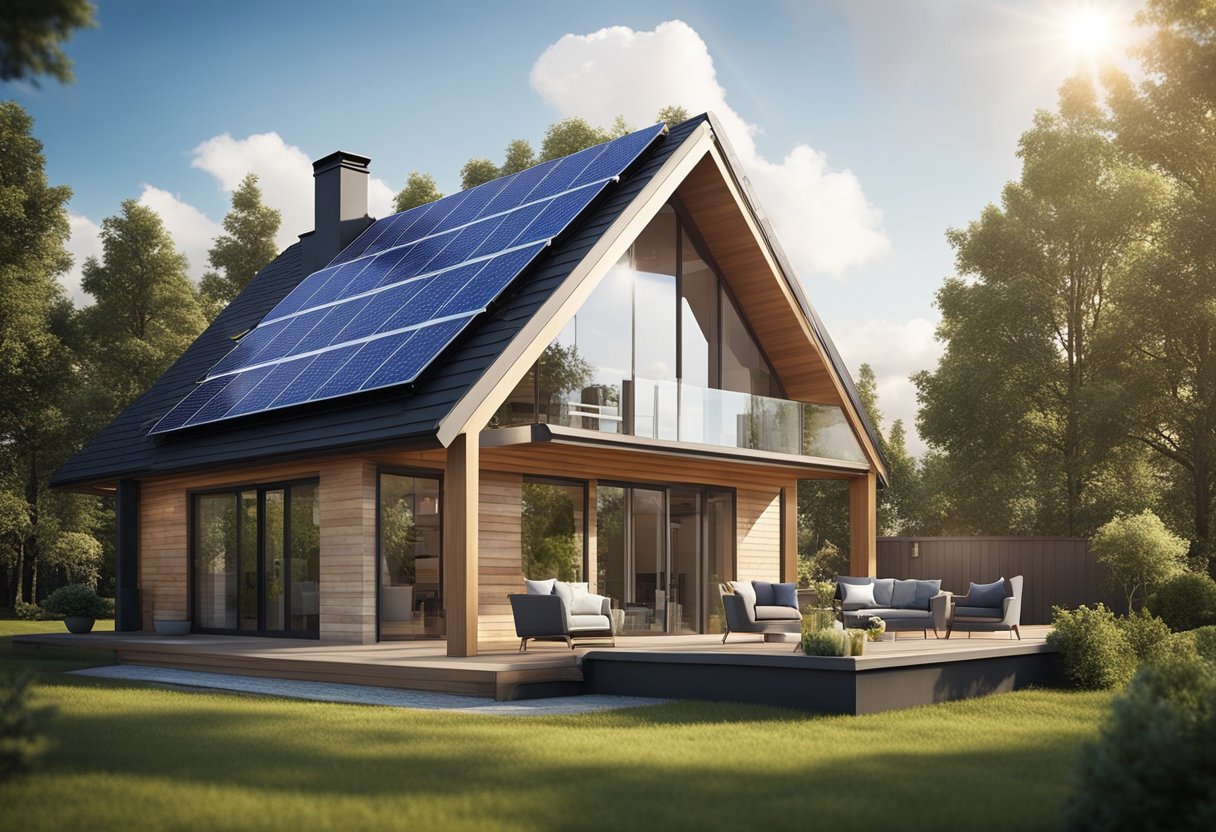
In the quest for energy efficiency, optimising home systems is paramount. These systems, often the largest contributors to a household’s energy consumption, present significant opportunities for savings and environmental impact reduction when managed properly.
Heating and Cooling
The heating, ventilation, and air conditioning (HVAC) system exerts a considerable influence on a home’s energy profile. Proper regulation of the thermostat can reduce unnecessary energy expenditure. A programmable thermostat offers the convenience of automatically adjusting temperatures throughout the day, aligning with occupancy and activity levels.
Regular maintenance of HVAC components, such as cleaning and sealing ducts, ensures optimum performance and minimises energy loss. Upgrading to an energy-efficient system can also lead to substantial energy savings.
Water Heating and Appliances
Water heating is a major energy consumer and thus demands attention in an energy-efficient home. Insulation of water heaters and hot water pipes reduces heat loss, while setting the water heater thermostat to an appropriate temperature avoids excessive heating, maintaining efficiency.
Energy-efficient appliances should be considered when upgrading or replacing existing units. Washing machines, dishwashers, and refrigerators with a high energy rating not only consume less electricity but also operate more effectively. For those considering a new water heater, tankless water heaters offer on-demand hot water with less energy waste compared to traditional storage models.
The implementation of a smart meter can provide real-time data on energy usage, allowing householders to identify and target areas for improvement, contributing to a more energy-efficient home environment.
Smart Lighting and Electrical Solutions
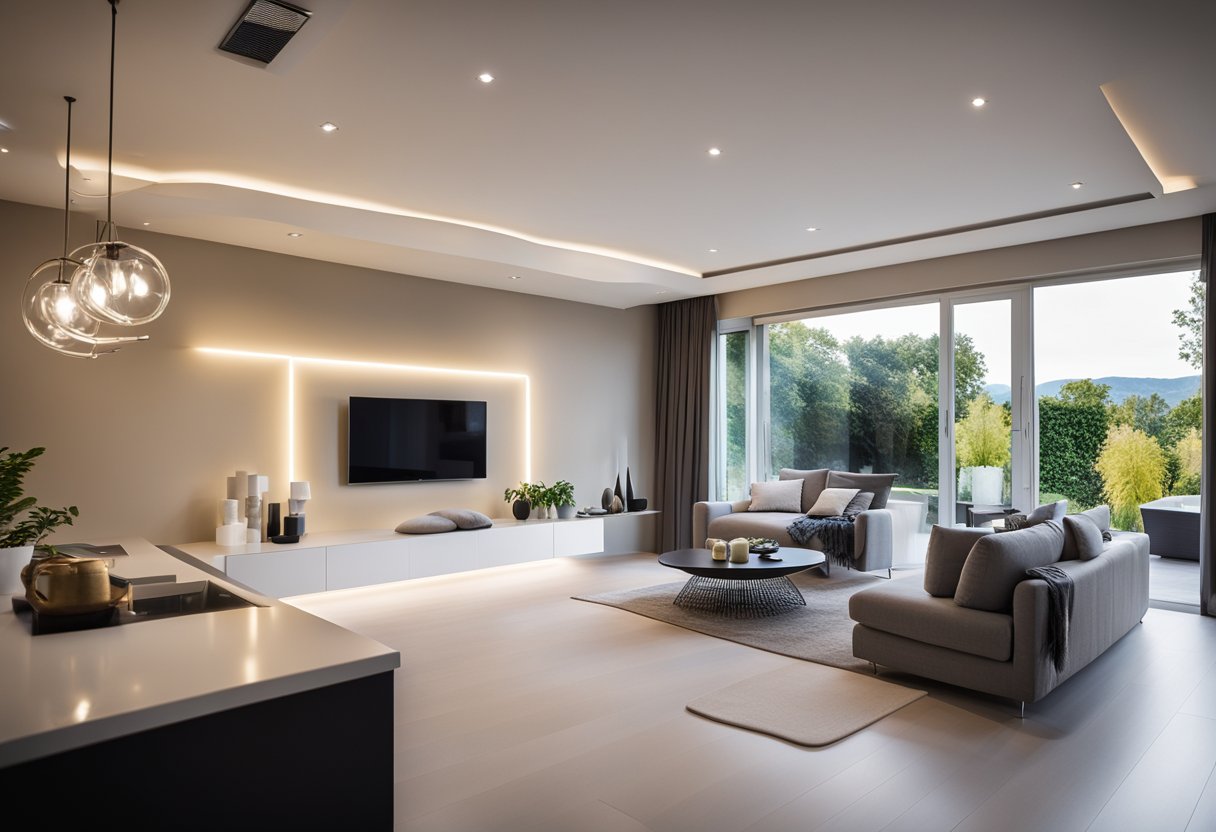
Creating an energy-efficient home often begins with optimising lighting systems and electrical appliances. This section will focus on the types of bulbs available for energy efficiency and the benefits of integrating automated controls.
Types of Bulbs
Energy-efficient lighting is instrumental in reducing electricity consumption. The primary types of energy-saving light bulbs include:
- LED (Light Emitting Diodes): These are highly efficient, with a longer lifespan than other types, and do not contain mercury.
- CFLs (Compact Fluorescent Lamps): Energy saving, though not as long-lasting or efficient as LEDs, and they do contain a small amount of mercury.
- Halogen Incandescents: These offer some energy savings and are a more efficient version of the older incandescent bulb technology.
When selecting bulbs, homeowners should consider the lumens (brightness), energy usage (wattage), and the colour temperature, which affects the light’s warmth or coolness.
Automated Controls
Automated controls enhance energy efficiency by adjusting the lighting based on occupancy or time of day. Key systems include:
- Smart Thermostats: These devices allow precise control over home heating, linking with smart lighting for increased energy conservation.
- Motion Sensors: They activate lights only when presence is detected, reducing unnecessary electricity use.
- Programmable Timers: Schedule lighting to turn on or off at specific times or according to daily routines.
- Smart Meters: Provide real-time information on energy usage, encouraging more mindful consumption.
Incorporating automated controls in a home’s lighting system can significantly contribute to a sustainable and cost-effective household.
Leveraging Renewable Energy
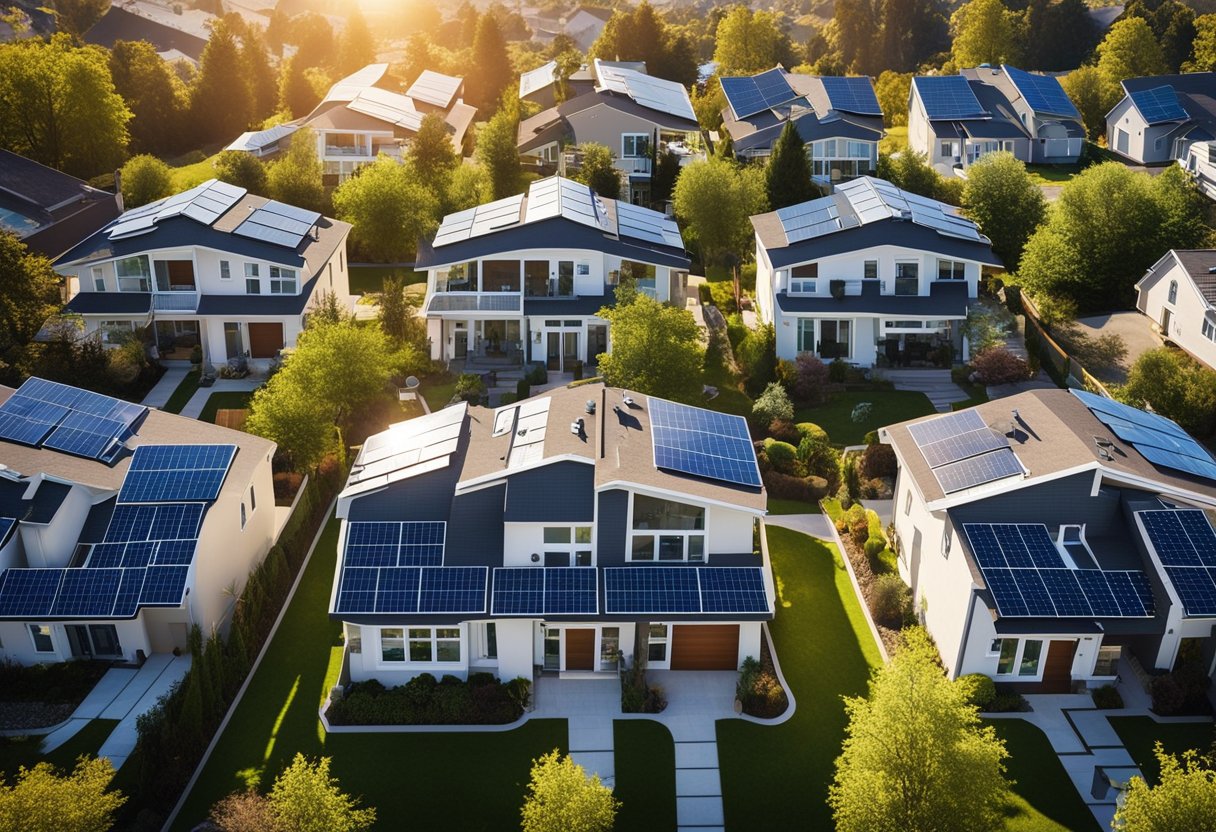
Creating an energy-efficient home heavily relies on integrating renewable energy systems to reduce reliance on non-renewable power sources. Solar power stands out as a highly accessible option, while other alternative energy sources complement the energy needs of a modern household.
Solar Power
Solar panels can play a pivotal role in energy efficiency by converting sunlight into electricity. Installing photovoltaic panels on a home’s roof allows homeowners to generate their own power, which can be particularly cost-effective when aligned with the Smart Export Guarantee (SEG), which compensates for surplus energy fed back into the grid.
- Renewable Heat Incentive: Incentivises installation of renewable heating systems, potentially including solar thermal panels, which generate heat instead of electricity.
- Energy-Saving: Strategic positioning of solar panels maximises energy generation, reducing household reliance on the grid and contributing to overall energy savings.
Alternative Energy Sources
While solar power is instrumental, other alternative energy sources extend a home’s capability in achieving energy efficiency.
- Air Source Heat Pumps: They are an efficient method of heating homes, working well with the Irish climate. They absorb heat from the outside air to heat radiators, underfloor heating systems, or hot water in homes.
Pros Cons Lower fuel bills Initial high investment Less maintenance Performance varies with temperature Reduces carbon emissions May require additional insulation
Combining these energy sources with smart home technology can maximise energy usage efficiency, contributing to a comprehensive energy-efficient home strategy.
Energy Audits and Improvements
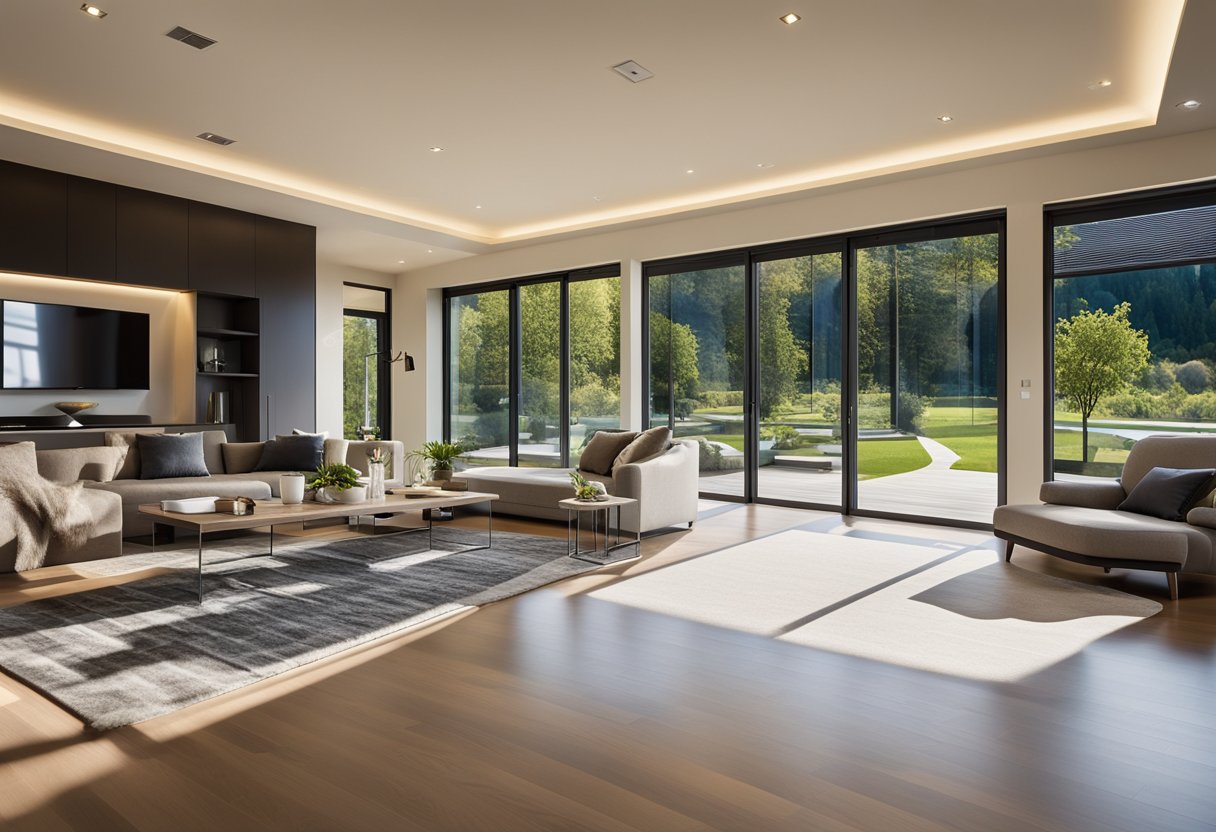
In pursuit of home energy efficiency, conducting an energy audit is a crucial initial step. It allows the homeowner to identify areas where energy consumption can be optimised, thus paving the way for meaningful improvements.
Professional Energy Assessments
A professional energy assessment, often referred to as an energy audit, is a thorough investigation of a residence’s energy use. It typically involves a certified auditor using specialised tools and techniques to detect inefficiencies and losses in a home’s energy consumption. The auditor examines key areas and systems, including insulation, HVAC (Heating, Ventilation, and Air Conditioning) equipment, and windows. After the assessment, homeowners receive a detailed report which highlights specific, actionable measures to enhance the efficiency of the home, potentially including the upgrade to ENERGY STAR appliances or improvements in sealing and insulation that have been identified as falling below the optimal performance standards.
DIY Energy Checks
For those familiar with their home’s energy systems, a do-it-yourself (DIY) energy check is a viable alternative to professional audits. They should focus on obvious issues such as drafts from doors and windows, checking insulation levels, and inspecting heating and cooling equipment for maintenance needs. They may also do basic checks like assessing the age and efficiency of appliances and making sure that all are ENERGY STAR certified if possible, as appliances with this certification meet strict energy efficiency criteria set by the U.S. Environmental Protection Agency. Homeowners can use a simple checklist to perform this assessment, which can later be supplemented by professional advice to ensure no potential savings are overlooked.
Financial Aspects and Incentives

Investing in home energy efficiency can offer substantial financial benefits and various incentives are available to alleviate the initial costs. Homeowners are encouraged to utilise government grants and focus on cost-effective investments to maximise their financial gains.
Government Insulation Grants
We have covered the government insulation grants available in detail on this page.
Cost-Effective Investments
Long-term cost savings come from judicious investments in energy efficiency. While some upgrades require upfront costs, the return on investment can be substantial in the form of reduced energy bills. For instance, products with the Energy Star rating are independently certified to save energy without sacrificing features or functionality.
- Energy Star appliances: They use less energy compared to standard models, leading to cost savings.
- Low-flow fixtures: Installing these in a home can reduce water consumption, hence lowering utility bills.
In conclusion, these financial incentives and cost-effective strategies ease the transition towards energy-efficient living, benefiting both homeowners and the environment.
Areas for Saving on Existing Homes
Providing effective insulation to the building fabric cuts the energy demand for space heating requirements – the largest proportion of our energy demand. The most energy efficient houses built are ‘Passive’, i.e. houses so well insulated and sealed that they require no conventional heating systems, using heat gain from the sun and internal gains such as cooking and lighting to heat the dwelling.
Improved Robust Detailing
As well as achieving effective U-values, emphasis must be placed on Robust Detailing – or the ‘Continuity of the Insulation layer’ avoiding any thermal bridges. Bad detailing can account for up to 40% of heat loss through the building fabric in a presumed ‘well’ insulated dwelling. Xtratherm systems that include corner & reveal boards for walls and perimeter detailing for floors have been approved and exceed the new Building Regulations.
Air Tight Build
Air leakage from buildings, the uncontrolled flow of air through gaps and cracks in the fabric of dwellings (draughts) is a major cause of energy loss and increased CO² emissions. Designing effective air barriers and sealing any gaps in the build will save energy, Air Pressure testing of properties can be used to measure air permeability.
Effective Boilers
Boilers will convert fuel to energy with varying efficiency. Condensing boilers have a minimum efficiency of 86% but can be as efficient as 97%, a vast improvement on earlier technologies.
Effective Heating Controls
Effective control of space & water heating facilities in a property is essential to assist in energy efficiency. Full time & temperature zoning is a requirement in properties over a certain size under the building regulations – but is recommended for all properties as ‘Best Practice’.
Efficient Secondary Heating
An assumption is made under the new building regulations that a certain amount of energy is used on secondary heating. Using a more efficient appliance such as a condensing gas fire rather than the default electric will improve efficiency, and burning renewables such as wood will also reduce CO2 emissions.
Controlled Ventilation
It’s important to distinguish this from air-permeability, which involves the deliberate movement of air in and out of the living space through specifically designed ventilation systems, essential for the well-being and safety of residents. Providing ventilation in the correct manner will help maintain efficiency, once an airtight build is achieved {Permeability less than 4m3/n/m2) mechanical ventilation with heat recovery becomes very effective.
Energy Efficient Lighting
As we achieve better control of space heating requirement through effective insulation of the building fabric and good control of our hot water needs – the energy demand for lighting becomes a bigger proportion of the energy demand and a major contributor to C02 production, not least because the energy is electric based which is a costly fuel and dirtier than all other fuels. Using energy efficient light fittings will reduce C02. Although we should aim to have 100% EE lighting – fashions dictate that this is not always possible thus 75% is quoted in our example.
Solar Gain
The ‘Free’ energy – good design takes advantage of solar gain.
Solar Water Heaters
Can provide up to 50% of hot water requirements on a SE-SW roof at 60°
Photovoltaics
Harnesses solar energy to power appliances and lights. Photovoltaic technology (PV) needs only daylight, not necessarily direct sunlight, to produce electricity. A typical array would cover 10-15 rrf of roof area, to provide 50% of electricity.
Pellet Stoves
Energy from biomass is produced from organic matter of recent origin – not fossil fuels, the CO2 released during burning is balanced by the C02 absorbed during the fuel’s production – this is Carbon Neutral. Storage of pellets is a major consideration.
Ground Source Heat Pump
The ground keeps a constant temperature of about 11-12° C. Ground source heat pumps (GSHP) can transfer this heat into a building to provide space heating. For every unit of electricity used to pump the heat, 3-4 units of heat are produced. Particularly suitable for under floor heating because of lower operating temperatures.
